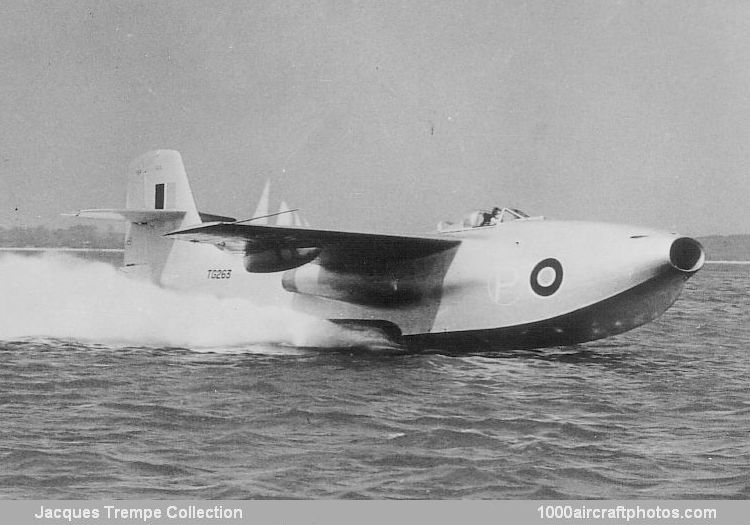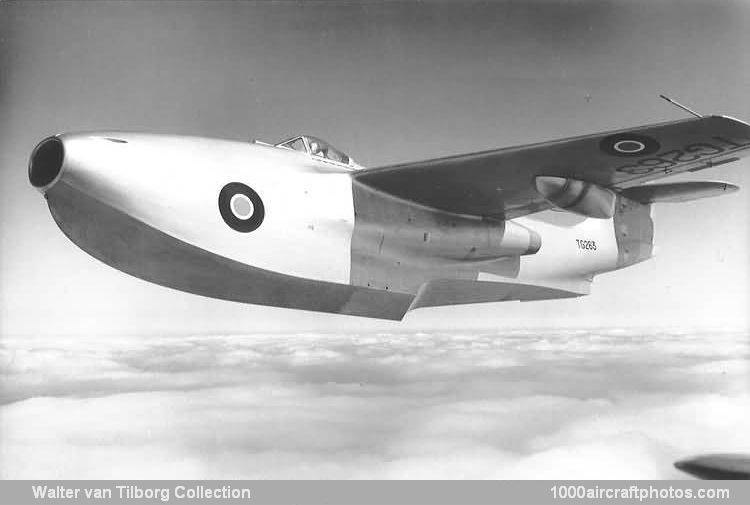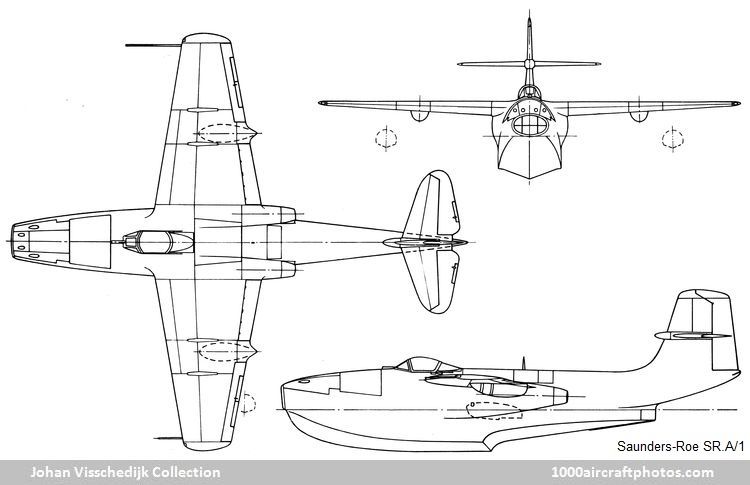09/23/2003. Remarks by Johan Visschedijk: "The unique operational flexibility of the water-based fighter has attracted many aircraft designers but, owing to hull drag, the flying boat fighter employing a conventional hull structure cannot compete in level speed with its land-based counterpart. However, the water-based fighter can perform a variety of useful roles, and the obvious value of such combat aircraft during the war in the Pacific resulted in the issue of specification E6/44, which called for a single-seat, twin-jet fighter flying boat.
To meet the requirements of this specification, Saunders-Roe Ltd. produced the SR.A/1, which, while of conventional construction and employing conventional hull design, embodied several features which were, at the time of its appearance, novel. The first of three SR.A/1 prototypes (s/n TG263, TG267, TG271) flew on July 16, 1947, powered by two 3,250 lb (1,474 kg) thrust Metropolitan Vickers Beryl M.V.B.1 turbojets housed in the hull with a common intake in the nose and outlets just aft of the wing. The first prototype, which was the world's first jet flying boat, was followed by a second machine powered by two 3,500 lb (1,588 kg) thrust Beryl M.V.B.2 turbojets, and a third prototype powered by two 3,850 lb (1,746 kg) thrust Beryl 1 (M.V.B.2) units.
The SR.A/1 had a normal fuel capacity of 425 Imp.gal (1,932 l), and jettisonable fuel tanks could be carried under the wing inboard of the retractable stabilizing floats. Loaded weight was l6,255 lb (7,373 kg), and empty weight was 11,262 lb (5,108 kg). The third prototype attained a maximum speed of 516 mph (830 kmh), and initial climb rate exceeded 4,000 ft (1,219 m)/min. Dimensions were: span, 46 ft (14.02 m); length 50 ft (15.24 m); height, 16 ft 9 in (5.11 m); gross wing area, 415 sq.ft (38.55 sq.m)."


